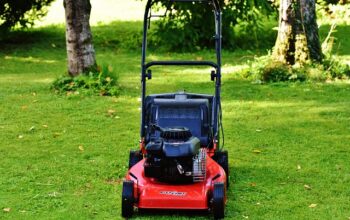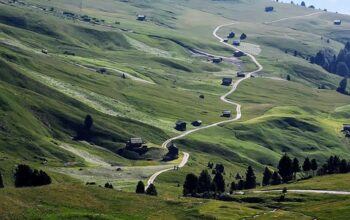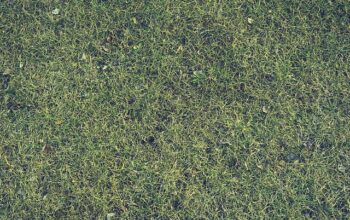Effective lawn care and landscaping are essential for enhancing visual appeal, property value, and sustainability. A well-maintained lawn requires a tailored approach based on turfgrass type, local climate, and soil composition to ensure optimal growth and resilience. Key practices include mowing at the right height, aerating for better nutrient uptake, strategic fertilization in line with seasonal changes, and implementing an integrated pest management (IPM) strategy for effective pest control. Water conservation is achieved through efficient irrigation systems like drip irrigation, which promotes deep root growth, and sprinkler systems used judiciously to minimize evaporation. Advanced technologies such as moisture sensors and smart controllers help optimize watering schedules based on local weather conditions, ensuring a thriving landscape that is both sustainable and visually appealing. Consistent upkeep throughout the year, especially during seasonal transitions, supports a healthy lawn ecosystem. Lawn Care and Landscaping practices are integral to fostering a lush, resilient outdoor space that withstands environmental stressors and frequent use, contributing to an overall sustainable environment.
Embark on a transformative journey through the art of landscaping design and implementation, where lush lawns meet harmonious hardscapes, and biodiversity thrives. This comprehensive guide delves into the nuances of lawn care and landscaping, offering insights into essential principles for vibrant turf, seasonal maintenance strategies, and selecting the right grass varieties for your unique climate and soil conditions. Discover the intricacies of strategic irrigation, the allure of native plants, and the impact of sustainable materials, all while enhancing your outdoor living spaces with decking, pergolas, and fire pits. Learn to create visual interest through textures, colors, and shapes, ensure proper erosion control, and master the art of pruning for optimal plant health. With practical tips on landscape drainage, composting, xeriscaping, and leveraging professional services, your lawn and garden will become a testament to sustainable beauty and year-round appeal.
- Essential Principles of Effective Lawn Care
- The Role of Seasonal Maintenance in Maintaining a Vibrant Lawn
- Selecting the Right Turf for Your Regional Climate and Soil Type
- Strategic Lawn Irrigation Techniques for Optimal Hydration
Essential Principles of Effective Lawn Care

A well-maintained lawn serves as a foundational element in landscaping design, enhancing both the aesthetic appeal and property value. Effective lawn care is rooted in understanding the specific needs of turfgrass varieties, climate conditions, and soil types. Regular mowing at the correct height, for instance, encourages healthy root growth and reduces the risk of weeds taking over. Aeration, which involves mechanically creating holes in the soil, allows air, water, and nutrients to reach grass roots, promoting a robust and lush lawn. The selection of appropriate fertilizers, timed with seasonal shifts, ensures that the lawn receives essential nutrients for growth and resilience against pests and diseases. Additionally, implementing an integrated pest management (IPM) approach can help control insects and other pests without over-relying on chemical treatments. Irrigation systems should be optimized to provide the right amount of water at the right times, conserving water while maintaining a healthy landscape. The integration of these principles in lawn care not only contributes to the overall health of the grass but also supports the environmental sustainability of the surrounding ecosystem. Landscaping professionals often emphasize the importance of consistent and careful maintenance, as this forms the bedrock of an attractive and functional lawn that can withstand the challenges posed by varying weather conditions and heavy foot traffic.
The Role of Seasonal Maintenance in Maintaining a Vibrant Lawn

Engaging in regular seasonal maintenance is pivotal for sustaining a lush and vibrant lawn, which falls under the broader category of lawn care and landscaping practices. Throughout the year, various weather conditions and changing seasons can impact soil quality, grass health, and overall lawn aesthetics. In spring, for instance, it’s crucial to clear debris, aerate the soil, and apply fertilizers that are rich in nitrogen to promote robust growth. This is a time when the grass recovers from winter dormancy and needs extra nutrients to thrive. As summer approaches, maintenance shifts towards ensuring the lawn can withstand high temperatures and dry spells. Regular mowing at the correct height, watering during dry periods, and overseeding bare spots are essential tasks that contribute to a resilient turf.
Autumn presents its own set of challenges and opportunities for lawn care and landscaping. This season is ideal for preparing the lawn for winter by reducing thatch layers, raking leaves to prevent matting, and continuing with aeration to enhance root growth. Additionally, fall is the optimal time for applying a winterizer fertilizer to bolster grass health as temperatures drop. Finally, as winter sets in, maintenance efforts may decrease, but it’s important to keep paths and lawn edges clear of snow to prevent damage and ensure that come spring, the lawn will be ready to emerge from its dormancy with vitality and vigor. Consistent seasonal care not only enhances the visual appeal of your landscaping but also fosters a healthy ecosystem that supports beneficial microorganisms and insects in the soil, leading to a more resilient and sustainable landscape overall.
Selecting the Right Turf for Your Regional Climate and Soil Type

When it comes to achieving a lush, thriving lawn, selecting the appropriate turf variety for your regional climate and soil type is paramount in landscaping design and implementation. Climate plays a critical role in determining which grass species will not only survive but thrive in your environment. For instance, cool-season grasses, such as Kentucky bluegrass and fescues, prosper in areas with cold winters and moderate summers, typically found in the northern United States. In contrast, warm-season grasses like Bermuda grass and Zoysia are better suited for the hot, humid climates prevalent in the southern regions. Understanding your local climate will guide you in choosing a turf that requires the right amount of sunlight, water, and maintenance to maintain its health and aesthetics throughout the year.
Soil type is another significant factor influencing grass selection. A soil analysis can reveal essential characteristics such as pH level, organic matter content, and texture, which are crucial for determining the best turf for your landscape. Clay soils, for example, retain moisture but may become waterlogged and compacted, requiring turf varieties that can tolerate wet conditions and have a high drought tolerance once the climate shifts. Sandy soils, on the other hand, drain well but may need additional nutrients and organic matter to support grass growth. Lawn Care and Landscaping professionals can provide tailored advice for your specific soil type, ensuring that your turf selection leads to a healthy, resilient lawn that complements the overall design of your outdoor spaces. By marrying the right turf to your climate and soil, you’ll set the foundation for a beautiful landscape that requires effective maintenance and care throughout the seasons.
Strategic Lawn Irrigation Techniques for Optimal Hydration

Effective lawn care is a cornerstone of a well-maintained landscape, and one of the most critical aspects is implementing strategic lawn irrigation techniques to ensure optimal hydration for your turf. The choice of irrigation system plays a pivotal role in water conservation and grass health. Drip irrigation, also known as micro-irrigation, is highly recommended due to its targeted delivery of water directly to the roots, minimizing evaporation and promoting deeper root growth. Another efficient method is the use of sprinkler systems, which should be scheduled to operate during early morning or late evening hours to reduce water loss from heat and wind.
To further enhance water efficiency, consider installing moisture sensors that trigger irrigation systems only when the soil has dried to a certain extent. Smart controllers can also be programmed based on local weather forecasts, adjusting irrigation schedules to skip watering on rainy days or during periods of low evaporation rates. Beyond the technical aspects, understanding the specific needs of your grass variety and local climate conditions is essential for tailoring an irrigation schedule that prevents overwatering or underwatering. Regular monitoring of your irrigation system’s performance, along with adjustments as seasons change, will ensure your lawn remains lush and healthy throughout the year. Landscaping design incorporates these irrigation strategies to create sustainable, beautiful outdoor spaces that are both environmentally friendly and aesthetically pleasing.
In conclusion, a well-designed landscape not only enhances the aesthetic appeal of your property but also fosters a healthier environment for your lawn. By adhering to the essential principles of effective lawn care, understanding the importance of seasonal maintenance, selecting the right turf for your specific regional climate and soil type, and implementing strategic irrigation techniques, you can ensure your lawn thrives throughout the year. These practices collectively contribute to a vibrant outdoor space that embodies the essence of landscaping design and implementation. For those committed to mastering lawn care and landscaping, these insights offer a solid foundation for achieving picturesque results that are both sustainable and enjoyable.



